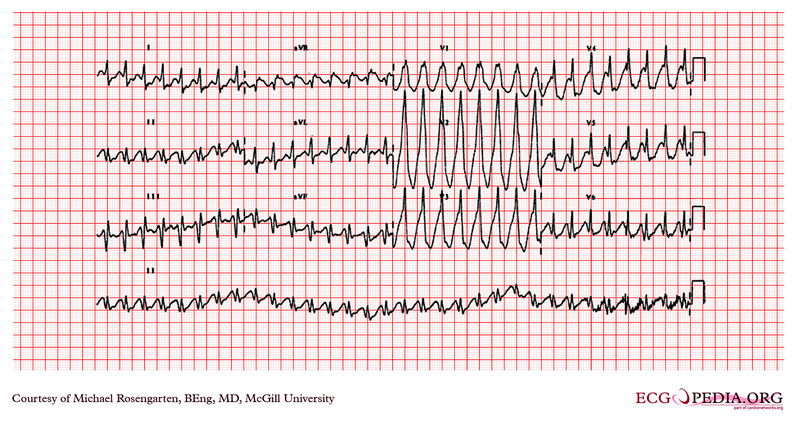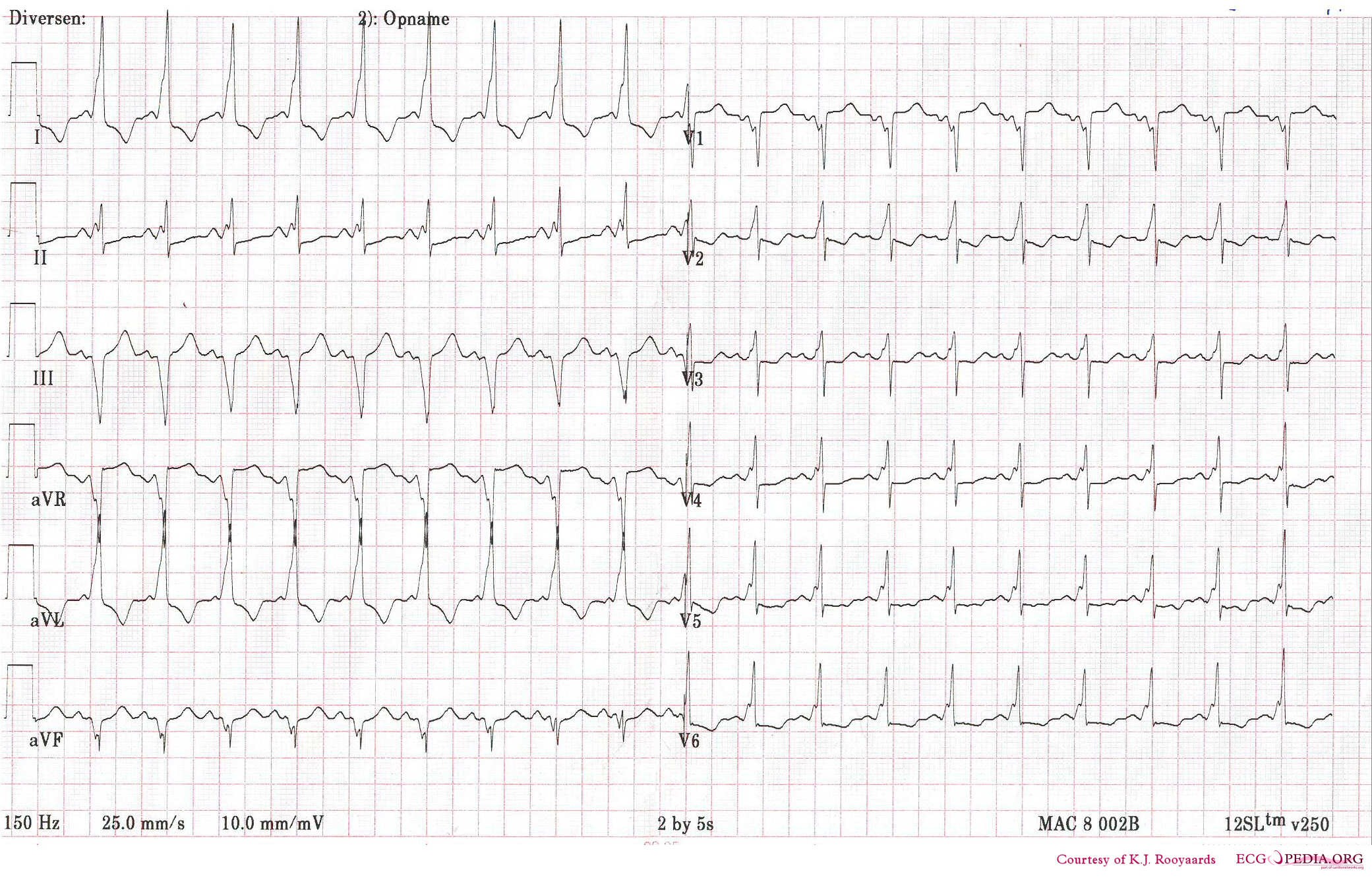Wide complex tachycardias examples: Difference between revisions
Jump to navigation
Jump to search
| Line 6: | Line 6: | ||
Shown below are examples of wide complex tachycardias and their diagnosis: | Shown below are examples of wide complex tachycardias and their diagnosis: | ||
---- | |||
VT with right bundle branch block morphology: | VT with right bundle branch block morphology: | ||
[[File:VT with RBBB morphology.jpg|center|800px]] | [[File:VT with RBBB morphology.jpg|center|800px]] | ||
---- | ---- | ||
Shown below is a patient with sinus tachycardia and WPW which mimics VT:. | Shown below is a patient with sinus tachycardia and WPW which mimics VT: | ||
Rhythm | [[File:WPW with sinus tachycardia mimicking VT.jpg|center|800]] | ||
ECG pedia suggests the 7 + 2 method to interpret the above EKG: | |||
===Rhythm=== | |||
* | * This is a regular rhythm and every QRS complex is preceded by a p wave. The p wave is positive in II,III, and AVF and thus originates from the sinus node. Conclusion: sinus rhythm. | ||
===Rate=== | |||
* | * Use the 'count the squares' method (a bit less than 3 large squares ~> 300-150-100), thus about 110 bpm and thus sinustachycardia. | ||
Conduction (PQ,QRS,QT) | ===Conduction (PQ,QRS,QT)=== | ||
* | * PQ-interval=0.10sec (2.5 small squares), QRS duration=0.10sec, QT interval=320ms | ||
===Axis=== | |||
* | * Positive in I, II, negative in III and AVF. Thus a horizontal (normal) heart axis. | ||
P wave morphology | ===P wave morphology=== | ||
* | * The p wave is rather large in II, but does not fulfill the criteria for right atrial dilatation. | ||
QRS morphology | ===QRS morphology=== | ||
* | * The QRS shows a slurred upstroke or delta wave. | ||
ST morphology | ===ST morphology=== | ||
* Negative T wave in I and AVF. Flat ST in V3-V5. | * Negative T wave in I and AVF. Flat ST in V3-V5. | ||
Compare with the old ECG (not available, so skip this step | Compare with the old ECG (not available, so skip this step) | ||
---- | |||
Revision as of 21:49, 13 October 2012
Editor-In-Chief: C. Michael Gibson, M.S., M.D. [1]
Overview
Shown below are examples of wide complex tachycardias and their diagnosis:
VT with right bundle branch block morphology:

Shown below is a patient with sinus tachycardia and WPW which mimics VT:

ECG pedia suggests the 7 + 2 method to interpret the above EKG:
Rhythm
- This is a regular rhythm and every QRS complex is preceded by a p wave. The p wave is positive in II,III, and AVF and thus originates from the sinus node. Conclusion: sinus rhythm.
Rate
- Use the 'count the squares' method (a bit less than 3 large squares ~> 300-150-100), thus about 110 bpm and thus sinustachycardia.
Conduction (PQ,QRS,QT)
- PQ-interval=0.10sec (2.5 small squares), QRS duration=0.10sec, QT interval=320ms
Axis
- Positive in I, II, negative in III and AVF. Thus a horizontal (normal) heart axis.
P wave morphology
- The p wave is rather large in II, but does not fulfill the criteria for right atrial dilatation.
QRS morphology
- The QRS shows a slurred upstroke or delta wave.
ST morphology
- Negative T wave in I and AVF. Flat ST in V3-V5.
Compare with the old ECG (not available, so skip this step)